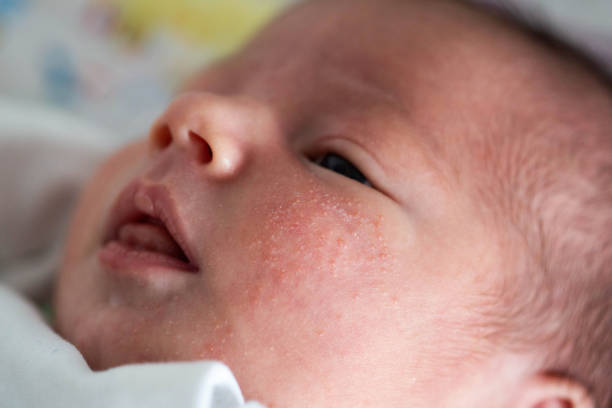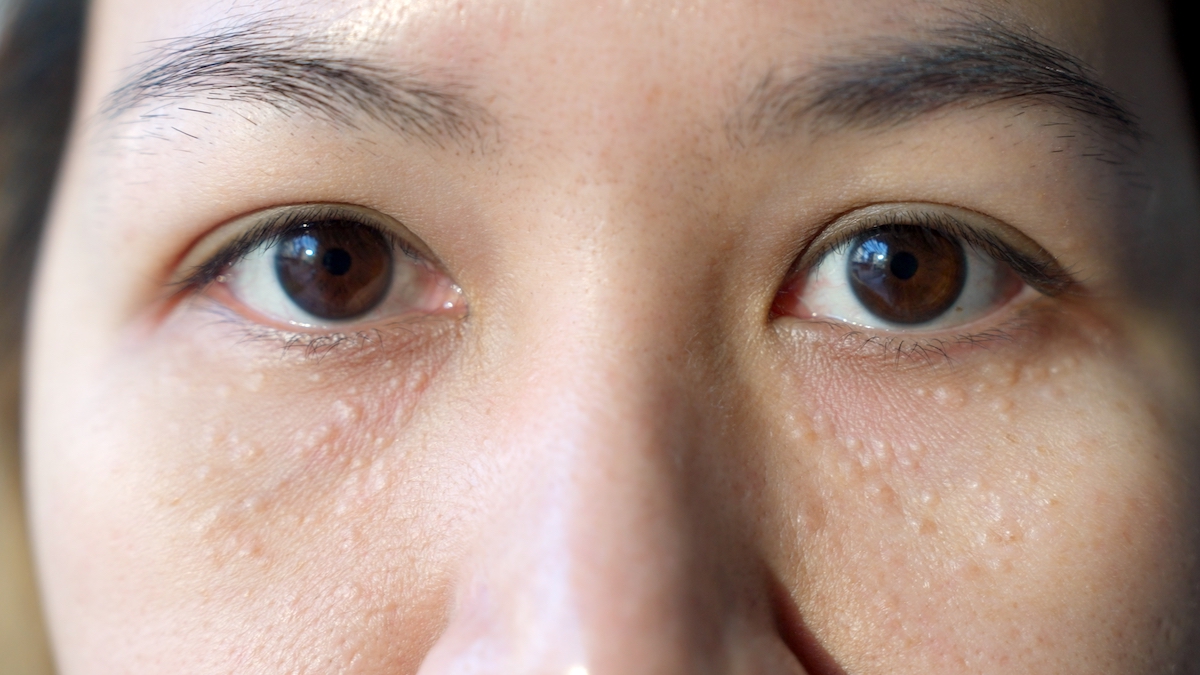Milia Treatment in Abu Dhabi, small white or yellowish bumps that appear on the skin, are a common skin condition often found on the face, particularly around the eyes and cheeks. Though usually harmless, these cysts can cause concern for those seeking clear, smooth skin. In Abu Dhabi, there are various treatment options available to address milia, and understanding the process can help you make informed decisions about how to effectively manage and treat this condition. This article will guide you through the milia treatment process, including causes, available treatments, and aftercare tips for achieving the best results.
What Are Milia?
Milia are small, hard, white cysts that develop when dead skin cells become trapped in pockets near the surface of the skin. They are commonly found in clusters, especially around the eyes, nose, and cheeks, but can also appear on other parts of the face and body. These tiny cysts are typically harmless and do not require treatment, but many people seek removal for aesthetic reasons.
Causes of Milia
Milia can develop for a variety of reasons, though they are often linked to the following factors:
Skin Care Products
Heavy creams, oils, or lotions that clog pores can lead to milia. Some cosmetic products, particularly those designed for dry or sensitive skin, may not allow the skin to breathe, resulting in blocked pores and the formation of these cysts.

Sun Damage
Excessive sun exposure can damage the skin, impairing its ability to shed dead skin cells properly, leading to the formation of milia.
Trauma or Injury
Skin trauma such as burns, blisters, or other types of injury may cause milia to develop as the skin heals.
Hormonal Changes
Hormonal fluctuations, especially during puberty or pregnancy, can also contribute to the development of milia.
Poor Skin Exfoliation
When the skin isn’t regularly exfoliated, dead skin cells can build up on the surface, causing blockages that lead to milia.
How Milia Are Diagnosed
A dermatologist in Abu Dhabi can diagnose milia through a simple visual examination of the skin. Typically, no additional tests are required as the condition is quite apparent. However, if you have recurring or widespread milia, a dermatologist may evaluate your medical history and recommend further treatments.
Treatment Options for Milia in Abu Dhabi
While milia usually resolve on their own, many individuals choose to seek treatment for faster removal or to prevent future breakouts. In Abu Dhabi, several effective treatment options are available to remove milia safely.
Professional Extraction by a Dermatologist
The most common and effective treatment for milia is professional extraction. A dermatologist or licensed skin care specialist in Abu Dhabi will use a sterile needle or small incision to gently remove the cyst. This procedure is quick, minimally invasive, and results in little to no downtime. Professional extraction is the safest method to avoid scarring or further irritation.
Laser Treatment
For those who have larger or persistent milia, laser treatment may be an option. A dermatologist may use fractional CO2 laser or other advanced laser techniques to target and break down the cysts. Laser treatments can effectively remove milia and prevent new cysts from forming.
Chemical Peels
Chemical peels can help exfoliate the skin, removing dead skin cells that may be contributing to milia formation. The treatment involves applying a chemical solution to the skin to remove the top layer, revealing fresher, smoother skin underneath. Chemical peels are ideal for those who have recurring milia or want to improve the overall texture of their skin.
Topical Treatments
Certain topical creams or ointments containing retinoids or alpha-hydroxy acids (AHAs) can help promote exfoliation and prevent the formation of milia. These ingredients work by accelerating the shedding of dead skin cells, which can help prevent blockages in the pores.
Cryotherapy
Cryotherapy, which involves freezing the cysts with liquid nitrogen, is another option for treating stubborn milia. This treatment destroys the cysts and can prevent their reformation. Cryotherapy is usually performed by a dermatologist and is suitable for individuals with larger or more persistent milia.
Aftercare Following Milia Treatment
Proper aftercare is essential to ensure the skin heals properly and to avoid scarring or further breakouts. After undergoing a treatment for milia removal in Abu Dhabi, follow these key steps to care for your skin:
Keep the Skin Clean and Moisturized
Immediately after treatment, it’s important to keep the treated area clean and moisturized to promote healing. Use a gentle, non-comedogenic cleanser and apply a soothing moisturizer to keep the skin hydrated.
Avoid Sun Exposure
For at least two weeks after treatment, avoid excessive sun exposure. The skin will be sensitive, and sun exposure can cause pigmentation or scarring. Always apply a broad-spectrum sunscreen with SPF 30 or higher if you must go outside.
Avoid Picking at the Treated Area
Though it may be tempting, do not pick or scratch at the treated area. This can introduce bacteria and lead to infection or scarring. Allow the skin to heal naturally, and be patient during the recovery process.
Follow Up with Your Dermatologist
If necessary, schedule a follow-up appointment with your dermatologist to ensure that the treatment was successful and that no new milia have formed. Regular check-ups will help ensure the long-term health and appearance of your skin.
Preventing Milia from Returning
To prevent the recurrence of milia, consider these simple lifestyle and skincare changes:
Regular Exfoliation
Exfoliating your skin 2–3 times a week helps remove dead skin cells and prevent blockages. Use gentle exfoliants, such as enzyme-based scrubs or mild chemical exfoliants, to avoid irritating your skin.
Choose Non-Comedogenic Products
Opt for skincare products that are labeled “non-comedogenic,” which means they won’t clog your pores. This is especially important for individuals with sensitive or acne-prone skin.
Protect Your Skin from the Sun
Wear sunscreen daily to protect your skin from harmful UV rays. Sun exposure can damage the skin and impair its ability to shed dead cells, which can contribute to milia formation.
Maintain a Healthy Skin Care Routine
Follow a consistent skincare routine tailored to your skin type. Incorporate products that are suitable for your skin’s needs and avoid harsh or pore-clogging ingredients that can trigger milia.
Conclusion
Navigating the milia treatment process in Abu Dhabi involves understanding the causes of milia, seeking professional treatment options, and following a proper aftercare regimen to achieve the best results. With the right care and guidance from a dermatologist, you can effectively address milia, restore the smoothness of your skin, and reduce the likelihood of future breakouts. Always consult with a skincare professional to determine the most suitable treatment plan for your individual needs.
